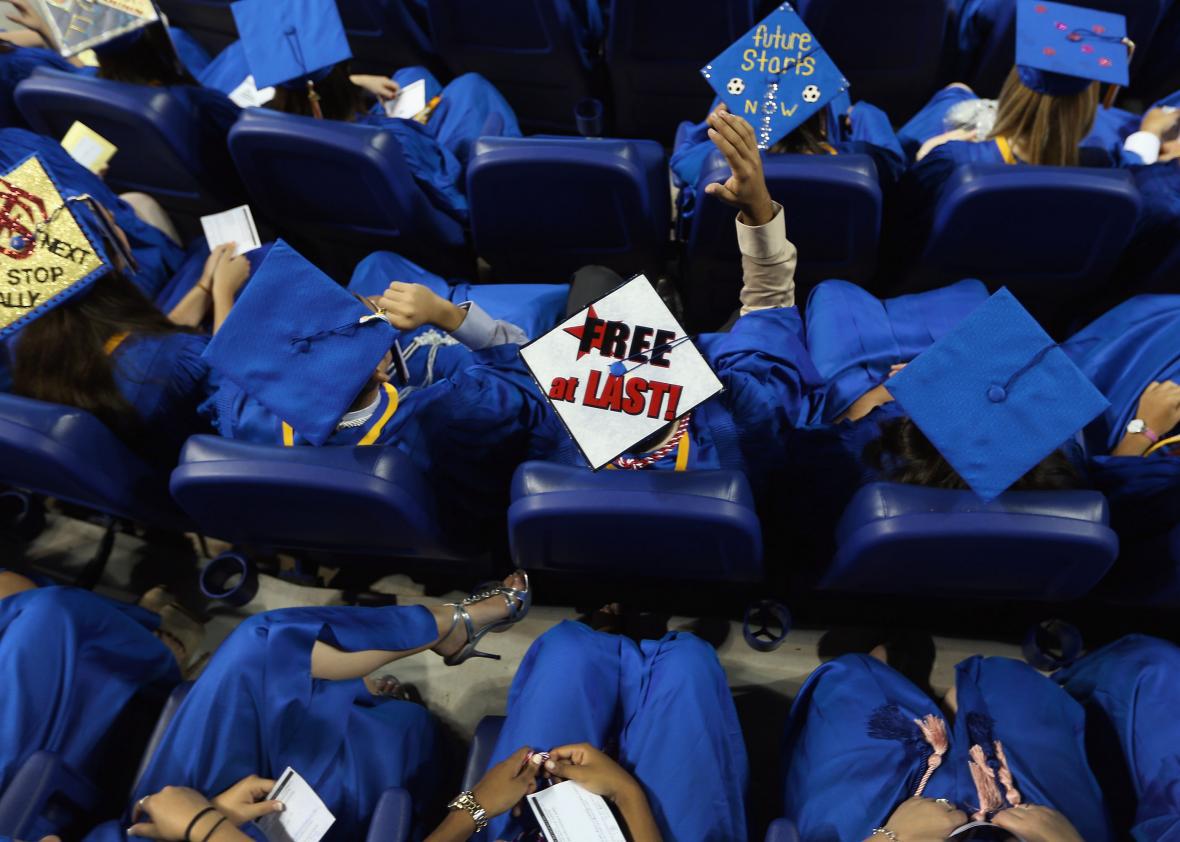High-school graduation rates continue to tick upward, reaching a high of 82 percent in the 2013–2014 school year, though there’s plenty of reason to question what exactly is behind those record numbers. Are more kids finishing high school because they’re ready to take on the proverbial real world, or are they finishing high school because their schools are under pressure to hand out more diplomas?
A study released Tuesday by the Education Trust, a civil rights organization that focuses on equity in education, adds ammunition to this debate. “Meandering Toward Graduation: Transcript Outcomes of High School Graduates” looked at transcripts of a nationally representative selection of 2013 high school graduates and found that while more kids are graduating, only a small fraction of those graduates are leaving school adequately prepared for whatever comes next.
According to the study, only 8 percent of recent graduates have taken a “foundational set of courses they’d need to be both college- and career-ready.” Forty-seven percent of them have completed neither a college- or career-ready curriculum. What does that mean exactly? For the academic track, it means taking the familiar sequence of 15 classes, in English and science and social studies and math and foreign language, that “determine eligibility to attend public colleges”; for the job track, it means taking three classes relevant to future careers—business and marketing, say, or communications and design. Ideally, students would complete (and demonstrate mastery in, but that’s a whole different topic) all 18 of these classes of the roughly 26 credits they need to graduate.
But instead, it seems that many kids are taking a hodgepodge of random classes that ill prepare them for life after graduation: “Rather than ensuring students have access to a cohesive curriculum that aligns high school coursework and students’ future goals,” the report says, “high schools are prioritizing credit accrual, which treats graduation as the end goal.”
That’s a word that keeps popping up throughout the study—“cohesive,” since cohesion is what seems to be lacking here: Even as course requirements have become more refined, students are still racking up credits willy-nilly to reach the finish line, “meandering through lots of disconnected courses that get them to graduation but nowhere else.”
Marni Bromberg, a co-author of the report, believes that the rising graduation rates (and higher enrollments in postsecondary institutions) are an overwhelmingly positive development but by no means the end of the battle. “Schools might be over-prioritizing what that diploma means,” she told me. “Schools are really focused on getting students the credits they need to get them across the stage with a diploma in hand as opposed to getting them the knowledge and the skills they need to set them up for success.”
All of this data must be taken with a grain of salt, of course—one of the biggest missing courses from the college-ready curriculum is Algebra II which, as Dana Goldstein argued in Slate last month, might not be such a linchpin of a well-rounded high school education as we’ve traditionally assumed. (The report found that, of the students who missed only one academic requirement, “About a third … missed the math requirement, not because they did not take enough math credits, but because they did not specifically take an algebra II credit.”)
Still, as more and more states adopt official “college and career-ready standards,” high schools must work harder to meet those standards. This report does a fine job of showing just how far we have to go on this front.
